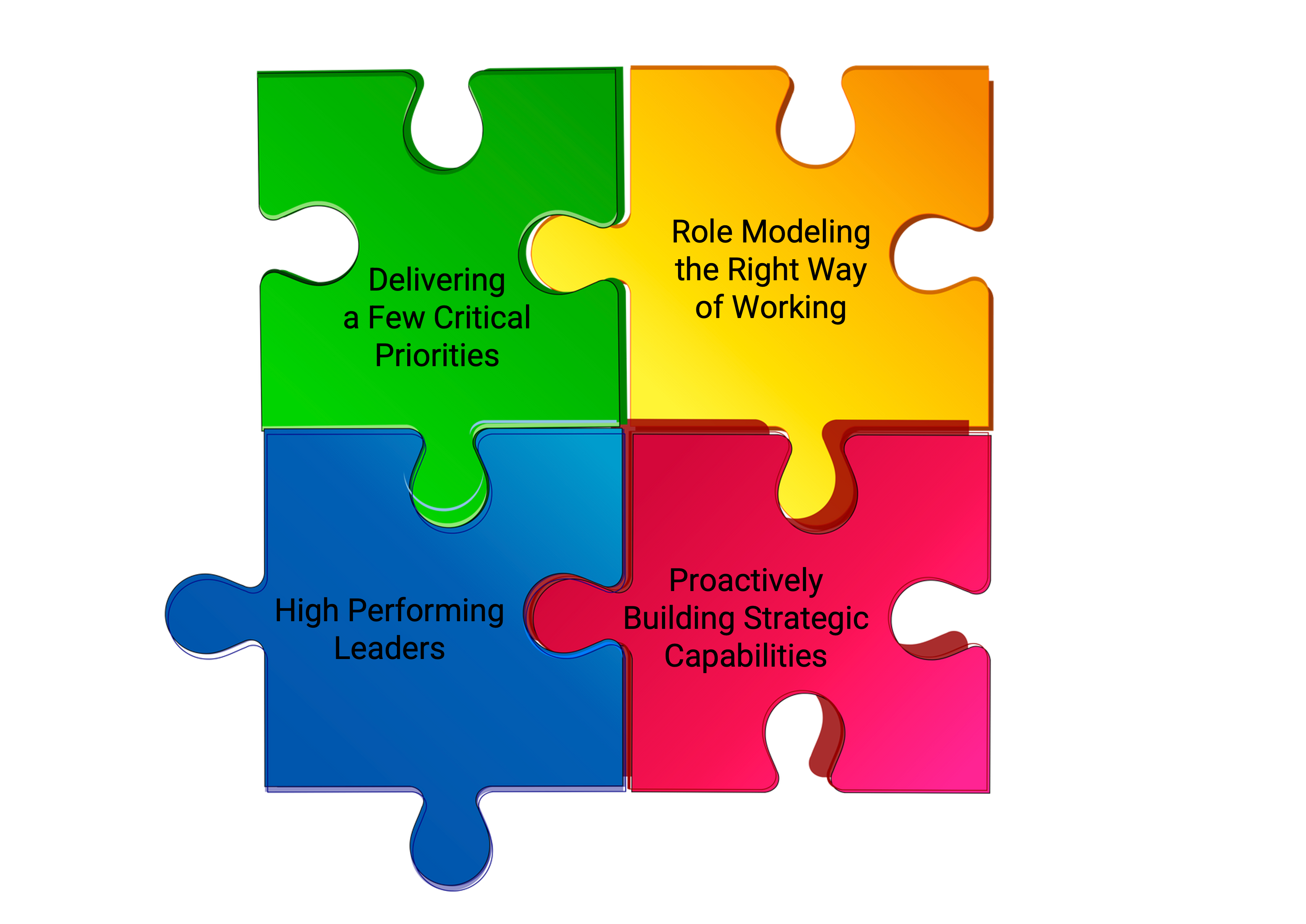Economies cannot grow forever, and that makes recessions a natural part of life. Companies that can only succeed during the “good” years, aren’t that strong of a company, and it shouldn’t surprise us that those companies collapse. Research from Harvard (Gulati, Nohria, & Wohlgezogen, Harvard Business Review, 2010) shows that 17% of large public companies won’t survive a recession. They will either go bankrupt, be acquired, or become private. While small businesses are even more at risk, as 26% of US small businesses failed due to the 2008 Recession.
No matter the size of your company, a recession can start you on a downward spiral. But that doesn’t mean you can do nothing about it. Companies can create a recession-proof strategy. The research definitively shows that the optimal strategy during a recession is to cut costs through operational efficiency, while at the same time strategically investing back in the business. This dual strategy will not only help your company survive the recession, but gives you the best chance at thriving while your competitors are struggling.
While a strategy of operational efficiency and strategic investments might seem like common sense, the majority of companies don’t do it. From my experience, this is often due to the people in the company. Operational efficiency or a high growth mindset is not something that can be turned on or off like a light switch. For some people it is like trying to look left and look right at the same time.
So it shouldn’t be surprising that this type of high efficiency and high growth strategy is rare among companies. But just because it is rare doesn’t make it impossible for your company. There are simple and proven ways that you can create a High Operational Efficiency / High Growth strategy within your company that can not only withstand a recession, but actually thrive in it. Of course, this assumes that you, the leaders, and the employees of your company are willing to put in the effort required for this type of strategy.
Recession-Proof Strategy – All Hands Goals

The 4 Components of a Recession-Proof Strategy
Survey 100 different companies, and you will get 100 different answers for the ideal strategy. But when you boil down all the research and best practices, there are 4 common components of a Recession-Proof Strategy:
- Delivering Few Critical Priorities – Everyone within the company needs to be crystal clear on the top two to three business priorities over the immediate future. That clarity allows for everyone to be aligned and working together to solve those priorities.
- Role Modeling the Right Way of Working – Once there are clear business priorities, leaders should ensure that everyone is working in a way that is aligned to those priorities. This includes how the organization is structured, how the processes are aligned, and how employees and teams are meant to work together. The goal is seamless collaboration. You don’t have time for infighting during a recession.
- Proactively Building Strategic Capabilities – A clear way of working together helps leaders understand what type of talented people they need within their organization. In a recession you might not always be able to hire the people you need. You need to be ready to grow them.
- High Performing Leaders – Finally, clarity on people capabilities will shape what kind of leadership and communication is required in the company. There is no recipe for the perfect leader, but some types will work better for some cultures than others.
That’s it… If you want your company to succeed and thrive during a recession, then you need to ensure these four things. And what makes this even better is that these four things are not necessarily that hard or complex to install in your company. In the rest of this article we will explore share a simple and pragmatic action on how you can accomplish step 1 for a Recession-Proof Strategy (Delivering Critical Priorities).
Recession-Proof Strategy – All Hands Goals

All Hands Goals Will Help You Deliver Critical Priorities
During a recession (or really at any time for that matter) your company does not have the luxury to waste time and resources on non-critical things. Even among all the important things you must accomplish, there are sure to be a few critical things that you absolutely 100% need to be accomplished. Instead of trying to accomplish everything, you need to remember that sometimes less is more. Fewer priorities, allows for leaders and employees to achieve a higher level of performance.
That is why we recommend your company should create 1-2 All Hands Goals. Start by asking yourself, “if we could accomplish only one or two things during the next 6 months, what would they be?” Other things might also be really important (and feel critical), but if you don’t deliver on the All Hands Goals, then you haven’t succeeded. These goals provide clarity to your company’s leaders and employees, and allows them to prioritize what goals they should work on. You don’t want them spending time focused on the color of the drapes or planting a nice garden, if the garage is on fire.
There are 4 rules when setting your All Hands Goals.
- Focused – Don’t try to create a “mega” All Hands Goal where you combine a bunch of goals into 1 super goal. That will just dilute the focus of your people. Instead make sure you are focusing on 1 critical thing.
- Co-Owned – An All Hands Goal cannot be the responsibility of 1 or 2 teams. The goal should be something that the majority of people contribute to, or support the people that are working on it.
- Definable Success – All Hands Goals must have a defined picture of success that people can understand. People need to be able to track progress against the definition of success, and ideally they need to know when they have succeeded.
- Temporary – All Hands Goals should not last forever, nor should it be super quick. The ideal length is 4-8 months. By then you should be prepared for the next major mountain that you will rally your bank around.
Recession-Proof Strategy – All Hands Goals

Empower Your People to Achieve the All Hands Goals
Once your leaders and employees are properly focused on the one to two All Hands Goals, then it is time to empower them to set their own goals. But instead of doing this individually, we recommend that teams come together to discuss this as a team. We also recommend that teams use the Start/Stop/Continue approach to discussing what the team should focus on.
- Start – What does the team need to start doing in order to deliver the All Hands Goals, and ultimately drive the strategy?
- Stop – What does the team need to stop doing because it puts the All Hands Goals at risk?
- Continue – What actions does the team need to continue doing that are critical for the All Hands Goals?
As the team creates specific goals and actions for them to take, use that opportunity to get volunteers for each task. By having people select their own tasks, they become significantly more committed to its success. It becomes “their” goal as opposed to the thing that their boss told them to do. Of course there are some scenarios where no one volunteers, but this is where the leader should tie it back to the All Hands Goals. The goal might not be fun to work on, but people will be willing to work on it if it is legitimately critical to the surviving and thriving during the recession.
Recession-Proof Strategy – All Hands Goals

Don’t Assume Everyone is Aligned
The final step in creating All Hands Goals is to align the different teams’ goals across your company. The goal of this step is to identify areas of risk and dependencies. For example, Team A might think that going left is the best way to achieve the All Hands Goal, while Team B is geared up to go right. Or Team A might require a deliverable from Team B to achieve the All Hands Goal, but Team B was planning to delay that deliverable. Too often organizations fail to take this step, and then they act surprised when their teams work in counterproductive ways.
The easiest way to ensure cross-team alignment is to have representatives of each team get together and share their plans. But the key thing that these reps need to remember is that their plans are still open for change. The meeting is not presenting the finished product, but rather discussing how all of the different team goals support the All Hands Goals. If the reps identify areas of risk or misalignment, then it is their responsibility to go back to their teams, and revise the teams’ plans to ensure alignment.
Recession-Proof Strategy – All Hands Goals

Your People are the Foundation of a Recession-Proof Strategy
The ability to rally everyone in a company around a few critical goals is the foundation of a Recession-Proof Strategy. Think about it… All of your competitors are probably facing the same issues you are facing, and want to be the rare company that shoots out of the recession like a rocket ship. What will separate you from your competitors is your ability to covert that vision into specific actions, behaviors, skills, and goals within your people. Because in the end, the only real difference between you and your competition is the people. Creating a Recession-Proof Strategy will harness the power of your people, and set you up as the company that will not only survive the recession, but thrive in it.
Stay tuned for more posts on how you can create a Recession-Proof Strategy, and deep dive on the remaining components (role modeling the right way of working, proactively building capabilities, and high performing leaders).
Recession-Proof Strategy – All Hands Goals
Cary Bailey–Findley has built High Performance Cultures within three Fortune 500 companies, and was awarded the ranking of #1 development organization in the world by the Association of Talent Development. He is currently the Talent Manager for SimCorp, but spends his free time helping startups scale up the the talent they need to succeed.




Add a Comment